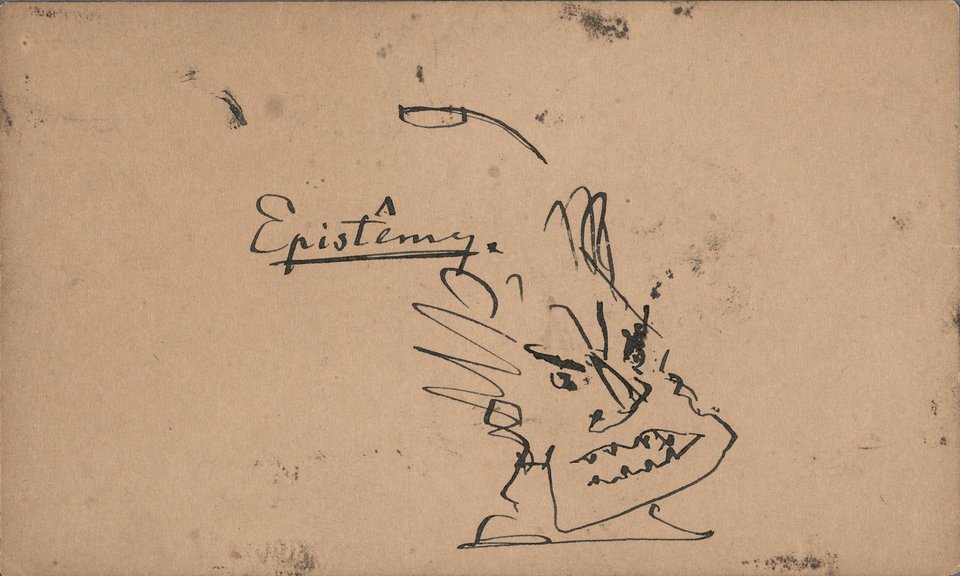Zentralinstitut der Humboldt-Universität zu Berlin

Picture Act and Body Knowledge
Research topic
This priority project studies the complex interactions between the human body and the image. We aim to explore the foundation for this interaction between design, perception and image activity.
The project is a collaboration between biology, philosophy, and art and visual studies. At its core is the hypothesis that image perception entails motor activity that is controlled through the body schema.
Within the priority area »Form Processes & Modelling«, which seeks to examine the interaction of form and perception, the project’s task is to investigate the subpersonal processes in which the human body is instrumental through motor resonance and habitualised influences.
The Cluster of Excellence Image Knowledge Gestaltung is reviving Leibniz’s call for »theoria cum praxi«, which is written into the university’s constitution, by examining the significance of images and designed objects in the research process. But our work goes further: by focusing on implicit, creative knowledge, which has always been applied in research, the conventional order of research followed by application is reversed.
The project »Picture Act and Body Knowledge« works collaboratively with the associated research projects »Iconic Form Processes« (Fritz Thyssen Foundation), »Bilderfahrzeuge/Image-Vehicles. Aby Warburg’s Legacy and the Future of Iconology« (Federal Ministry of Education and Research) and »Symbolic Articulation« (Volkswagen Foundation) to determine the specific characteristics of propositional, implicit, procedural and, in particular, embodied forms of knowledge. The two key concepts in our project are the concept of the body, through which the desired integration of design and designed form is achieved, and the interaction of image and body.
Our research takes as its point of departure Horst Bredekamp’s theory of the picture act, developed in 2010. Drawing on his reflections, we will conduct fundamental research on the role of the human body in design processes. Given the significance of images in virtually all spheres of life and science, a number of questions pose themselves: why do images influence people’s thoughts, actions and feelings? What are the processes of image design and recognition based on?
The project »Picture Act and Body Knowledge« examines these questions from an interdisciplinary perspective that incorporates biology, art and visual history, media studies and philosophy. Our collaborative research considers aspects such as the human body schema, mirror neurons, reflexes, kinaesthetics, sense of rhythm and automation. With the aid of biological findings and methods, this project is the first to study the morphological foundations for the visual creative process, with our objective being to gain a closer understanding of the constitution of the body schema through a combination of intelligent biomechanics and proprioception.
Objectives
Our aim is to understand the fundamental bodily conditions for image activity and their role in design processes of all kinds. Our research focuses on the human body schema, which forms the basis for the practical handling of materials, artefacts and the person’s own body in motion. We see thinking in images, models and intelligent materials as a sine qua non in human development generally and in scientific practice specifically. Focussing our investigations on the human body in the context of its interactions with artefacts will enable us to reach a deeper understanding of this essential prerequisite.
By studying the conditions of embodied and image-based thinking, the project »Picture Act and Body Knowledge« provides the foundations for the Cluster’s theoretical framework.
Execution
Experimentalisation: developing and conducting experiments to examine interactions between the image and the body is the central focus of our collaborative work. We will analyse image perception processes and movement learning processes qualitatively and quantitatively. We will use three-dimensional motion recordings from high-speed cameras (Contemplas Templo), detailed determinations of space-time parameters in observed movements based on analysis software (Vicon Motus 3D) and interviews with the experiment participants.
Theorisation: in a preparatory stage, we will study the literature on the picture act, biomechanics, robotics and the philosophy of embodiment. We will develop the experimental set-up and the evaluation of the experimental results from a biological, philosophical, historical (art history and history of science), choreographic and media theory perspective. We will develop our theoretical foundation in workshops, in collaboration with the Fellows and the other Cluster projects.
Conceptual consolidation: individual projects (theses/dissertations) will examine the research question with reference to different objects.
Securing the results
Project results are secured on various levels. The project has already published widely, and this will be continued with the series »Actus et Imago«, an anthology of current picture act research. The quantified movement studies will feed into online publications with filmed movement documentation.
